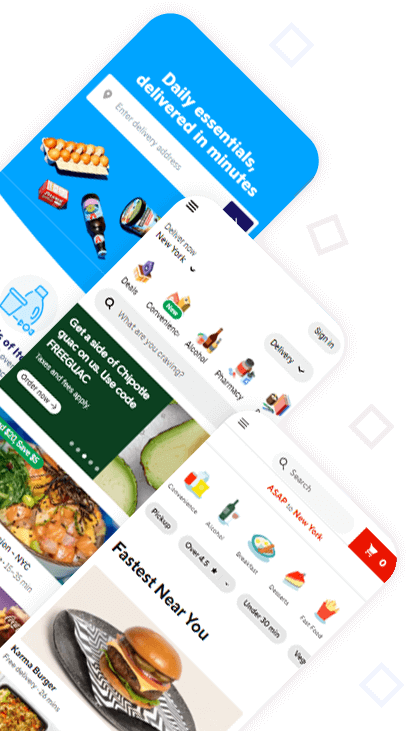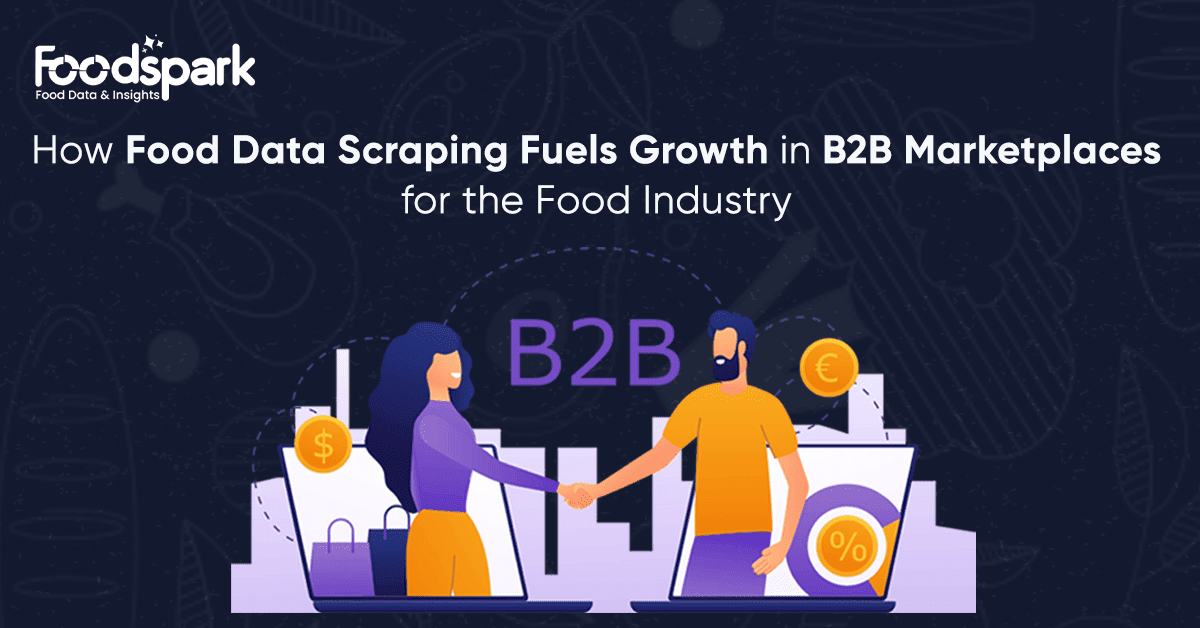Why is Web Scraping Cloud Kitchen Data from Swiggy & Zomato Essential?
January 27, 2025 The global cloud kitchen industry is rapidly expanding and is projected to reach $117.89 billion by 2031....
Read more
We'de love to hear what you are working on. Drop us a note here and we'll get back to you within 24 hours.

B2B marketplaces use data collection to expand and maintain relevance in the food industry. Organizations can improve their productivity, customer satisfaction, and decision-making by gathering critical information from different websites on the internet.
Companies can accumulate vast amount of data by data scraping their sites available on the internet, social media, and competitive websites. Businesses will determine trends in preferences and buying behaviors about clients while analyzing data. While extracting data from meal delivery apps or popular items, B2B marketplaces can design services according to the demand of customers.
A business can keep pace with its competitors by monitoring their projections. Information collection tools, which rely on estimated data gathered from various sources, allow an organization to review its pricing in a short time and make the necessary adjustments.
For instance, a business can enhance its business strategy by reviewing the pricing models of its competitors and the speed of supply, using data from essential goods delivery services such as Zepto.
In B2B markets, sophisticated inventory control systems must be implemented to avoid congestion in the network and failure to deliver to customer demand. The analysis allows firms to obtain timely information on product availability, predictions about sourcing, and trends of advertising requests. Analysis of this information enables companies to improve their supply chains, minimize costs, and predict stock shortages. For example, an analysis of cost and accessibility can be done by assembling scratch data collected from various sources to make an informed decision on purchasing. At the same time, this improves the relationship with consumers.
Information scanning can reveal data elements associated with areas that require improvement and those that lead to customer satisfaction, thus allowing the generation of reports and assessments at various stages.
Organizations can use data analysis to improve their customers’ overall experience by making their products and services more responsive to their needs. For instance, companies can identify common problems or issues by analyzing online feedback and posts on social media sites. Subsequently, they may implement the required adjustments.
Data hijacking allows enterprises to monitor all components that are often exposed. Researching rivals’ goods and services, seeking customer feedback, and assessing their advertising techniques may help firms uncover possibilities and fill market gaps. Consider a B2B market. They may carry uncommon plant-based items if data shows a desire for them. This unorthodox strategy helps firms to stay ahead of the competition while also adapting to their client’s changing demands.
Data gathering can help manage risks as it may help track various factors such as legislative changes or pricing fluctuation,s that would impact supply chains. For instance, an example involving Agri Stats illustrated how the information sharing between livestock producers led to mistakenly increased pricing to consumers and companies.
Businesses need to be aware of these risks through information extraction to adjust their operations to a wide range of threats. Strategies are specially developed to gain attention and build agreements. Businesses may construct more targeted advertising campaigns by collecting complete data on their clients’ likes and actions.
With an essential understanding of the data scraping process to find information, popular items, and trends, a person can focus on the creation of new products and concepts. Applying this tailored method increases sales in the business-to-business market because customers are getting more engaged and committed. Companies could create more relevant proposals by examining statistics from food ordering services, such as when most people order during the day.
Efficiency in activities is enhanced through a decrease in data capture errors, inaccuracies, and dependency on human labor. The speed at which organizations can access and process large amounts of data enhances quick decision-making.
For example, the automatic acquisition of information about inventory and prices from suppliers allows for real-time adjustments, such that the organization and its customers have ample access to relevant data.
Organizations can determine potential partners through data searching by identification of organizations or services that match a particular company’s needs. Through the review of data on marketing reputation, product quality, and service effectiveness, organizations can base their decisions to create an alliance on informed criteria.
Major alliances provide B2B markets with stability and growth. For example, companies can seek and improve their products by focusing on suppliers who have received good reviews from satisfied clients.
An enthusiasm for learning can cultivate a culture of perpetual advancement. By monitoring market dynamics, consumer preferences, and competitor strategies, organizations can remain competitive and introduce innovative products and services.
In an environment characterized by swift change, this proactive strategy guarantees that B2B markets maintain their relevance and profitability. Analyzing data to determine trends about potential customers might make the company more responsive to the environment and attractive to those customers who are environmentally conscious.
eWorldTrade is a leading B2B food industry network that connects clients with vendors through data-driven experiences. Data-scraping technologies help optimize estimations over prices, promote market trend analysis, better pricing strategy determination, and increase customer experience. Engaging with a large network of reputable suppliers ensures that the food supply chain continuously operates with quality and transparency.
Alibaba’s B2B sales market uses the latest data analytics to enable food businesses worldwide to speed up their purchases. Alibaba helps companies make better purchase decisions by collecting and processing data on customer preferences, price trends, and delivery patterns. In addition, its AI-based ideas also help customers develop relationships with retailers.
Global Sources offers food business companies the ability to collaborate with trustworthy suppliers based on data-driven experiences. The several dimensions of information access on the site help clients check costs, track advertising trends, and receive quality verification documents. This means that food business companies make fact-based decisions on the origin of their products.
DH Gate provides a data-intensive platform for the food producers and the customers to find the food. Analytics enable the corporate center to evaluate, in real time, project needs, suppliers, and expenditures. This is important because it enables companies to streamline their supply chains and discover more efficient procurement strategies, leading to increased efficiency.
The main objective of FoodExport is the connection of food sellers and buyers in all parts of the world. The platform can convey routines, and administrative needs, and show demands through experiences to record information. This data-driven approach will help food producers target a much broader international market.
Real-time data enables businesses to enhance their estimates, streamline operations, better display inquiries, and ultimately give greater value to their customers. Data-driven businesses have had great success in the ever-changing and demanding food industry.
January 27, 2025 The global cloud kitchen industry is rapidly expanding and is projected to reach $117.89 billion by 2031....
Read moreJanuary 21, 2025 B2B marketplaces use data collection to expand and maintain relevance in the food industry. Organizations can improve...
Read moreJanuary 2, 2025 Web scraping has now become an important strategy in the accelerating world of e-commerce, especially for businesses...
Read moreAutomated page speed optimizations for fast site performance